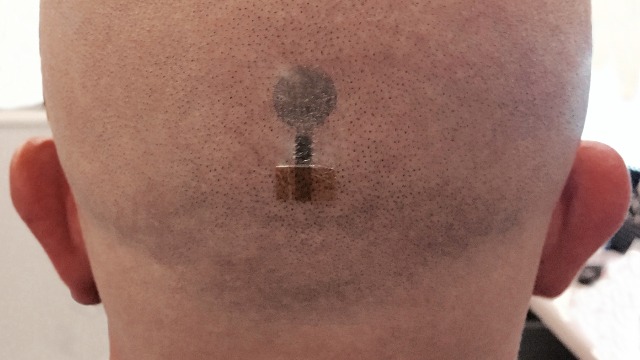
While tattoos are considered more of body art by many, scientists seem to have found a better use for them in the field of medicine.
In 2015 a team of Italian and Austrian scientists managed to develop ‘tattoo electrodes’ using conductive polymers that can be printed on standard tattoo paper using an inkjet printer. These are then stuck to the skin in a similar fashion as a child may place a temporary tattoo onto their skin.
In 2018 Francesco Greco, at the Graz University of Technology, developed these electrodes further to optimize them for electrocardiography (ECG) and electromyography (EMG) tests.
According to a study published in Nature Partner Journal, Flexible Electronics, Francesco Greco along with Esma Ismailova and Laura Ferrari has managed to further modify the tattoo electrodes to measure brain activity via electroencephalography (EEG).
EEG – a measure of the electrical activity of the brain
An EEG test measures the electrical activity of the brain via small electrodes that are attached to your scalp. Due to its low cost and non-invasiveness, it is considered one of the most popular tests in neurophysiology. Diagnosing epilepsy, sleep disorders, coma, and, brain death are just some of the uses of an EEG scan.
While there has been considerable advancement in EEG scans over the years, the main limitation for the test remains the electrodes. The number of electrodes used for the scan can vary anywhere between a few to more than a hundred adding to the discomfort of the patient.
Previously wet electrodes used to be the gold standard in clinical practice. However, they require the help of a conductive gel to establish contact with the skin which can leak and dry out, affecting the electrodes’ reliability. This led to the development of dry electrodes which, despite their higher impedance, were unable to establish a stable connection with the skin, affecting the quality of the recorded signals.
These epidermal electronic devices offer a conformal and imperceptible contact with the wearer while enabling good quality recordings over time
Francesco Greco
Since temporary tattoo electrodes (TTEs) are dry electrodes they don’t dry out and can be used for long-term monitoring. With a thickness of just 700 to 800 nanometers, which is 100 times thinner than human hair, TTEs can also attach to uneven skin and are hardly detectable.
TTEs are also perforable thus, hair can grow right through the tattoo without affecting the quality of the signals. The absence of any metals makes them the first electrodes which are also magnetoencephalography (MEG) compatible. Additionally, the use of inkjet technology makes TTEs a cheaper alternative to conventional EEG electrodes.

Greco – TU Graz
In the study, researchers were able to show that the EEG readings with temporary tattoo electrodes are as accurate and reliable as conventional EEG electrodes.
The team of researchers are currently working on optimizing this technology for use in the field of neuro-engineering and brain-computer interfaces.
References:
Ferrari, L.M., Ismailov, U., Badier, J. et al. Conducting polymer tattoo electrodes in clinical electro- and magneto-encephalography. npj Flex Electron 4, 4 (2020). https://doi.org/10.1038/s41528-020-0067-z



